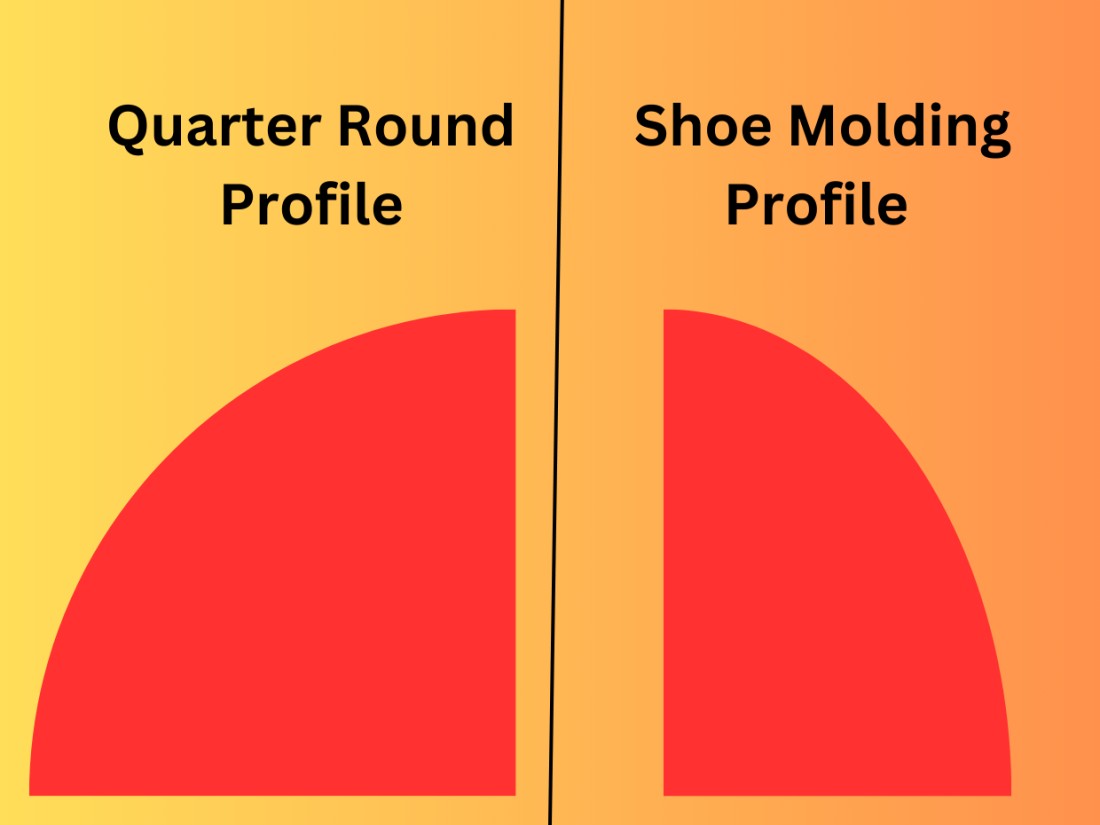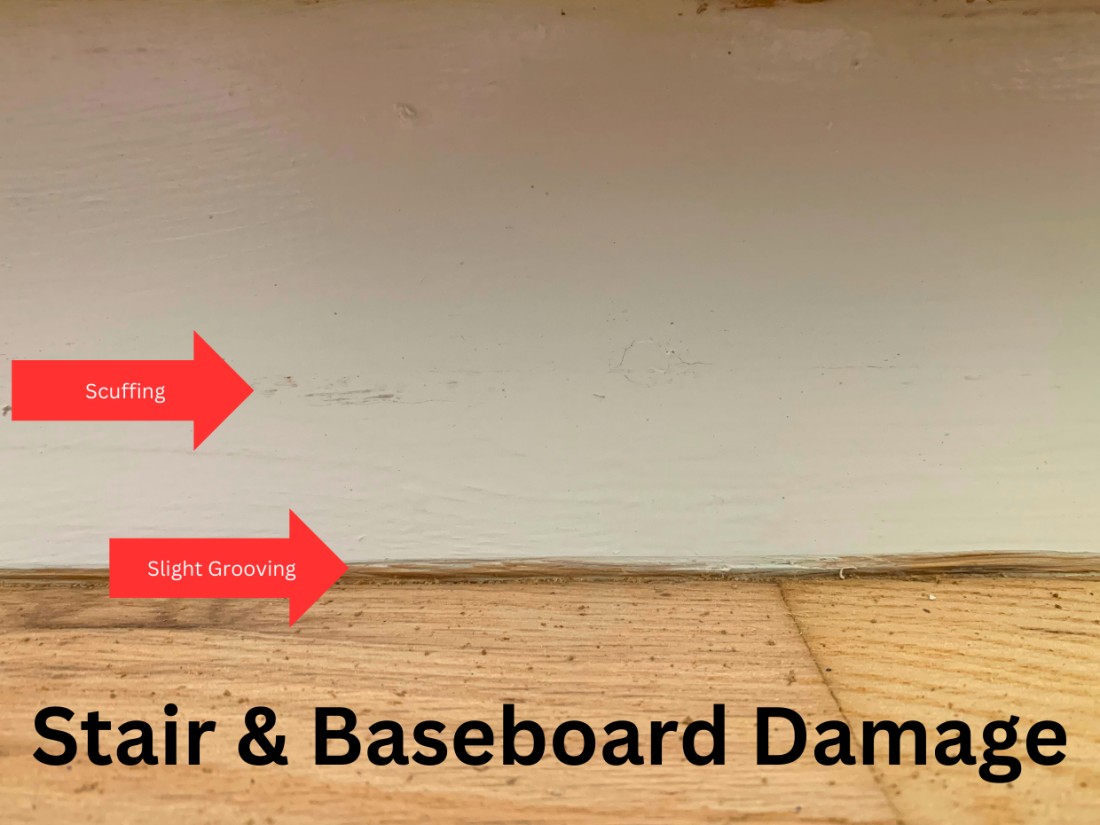Does Your Trim Need To Be Removed Before We Refinish?
Refinishing hardwood floors is a process that can potentially damage your base trim if left on, but removing them may also cause damage. Our recommendation is to remove and replace shoe moldings but leave baseboards intact. Decisions about whether to remove certain types of trim can significantly impact the outcome of your refinishing project. In this guide, we'll explore the nuances of trim removal and provide insights into the different types of trim commonly found in homes.
The Role of Trim in Hardwood Refinishing
Trim serves both functional and aesthetic purposes in homes. While it adds a finishing touch to the edges of floors and walls, it also covers gaps and transitions between different surfaces. However, when it comes to refinishing hardwood floors, the presence of trim can pose challenges and considerations for homeowners.
Understanding Shoe Molding, Quarter Round, and Baseboard
Before delving into the removal process, it's essential to understand the different types of trim:

Shoe Molding and Quarter Round: Often used interchangeably, these small, rounded moldings sit at the bottom of baseboards. While quarter round is one quarter of a circle, shoe molding lacks even proportions but looks similar. They both serve to cover gaps and provide a finished look to flooring transitions.
Baseboard: Unlike shoe molding and quarter round, baseboard is a vertical board, typically four to six inches tall, installed around the base of drywall. It adds a decorative element while also protecting the wall from scuffs and damage.
Should Shoe Molding and Quarter Round Be Removed?

Ideally, yes. Removing shoe molding and quarter round before refinishing provides easier access to the floor edges and minimizes potential damage to the trim. However, it's not entirely necessary, as touch-up paint can suffice. If budget constraints or time limitations are factors, leaving them in place is a viable option.
Do Baseboards Need to Be Removed?

No, it's generally not recommended to remove baseboards before refinishing. While refinishing may cause minor damage to baseboards, such as scuffing or staining, removing them can result in more extensive damage to the walls and trim. Repainting or touching up baseboards after refinishing is often more manageable than dealing with the consequences of removal. Removing the baseboards often makes keeping the floor clean in the coating process extremely difficult due to the drywall dust and debris hidden behind them.
Should Baseboards Be Taped Up For Hardwood Floor Refinishing?
While this may seem like a good idea, it does come with some headaches of its own. In very old housing with many layers of paint, we often find that the painter's tape (even Frog tape) will pull off layers of paint. We also have found that floor stain bleeds under painters tape very easily, making it virtually impossible to keep all of it off. The best option is often to carefully apply the stain getting as little on the baseboards as possible without taping them up. When the floor is complete, any damaged or stained areas should be painted over.
Should Base Trim Be Removed For Hardwood Flooring Installation?
Quarter round and shoe molding should always be removed when installing new floors, but baseboard removal is more complicated. New hardwood floors can be installed with the baseboards left on, but generally, they shouldn’t be. Your baseboard will look shorter and be harder to replace in the future with the new floor going up against them. There are some cases where it does make sense. When removing the baseboards and raising them will cause a height difference somewhere. Lots of times the baseboard runs from the new install onto areas with old carpeting or tile. The baseboard that's set over those old flooring types will often be at a different height. If there is a door jamb or some other type of molding that offers a stopping point between the two types of floor, this isn’t a problem, but if the baseboards run continuously, they will not line up anymore. In this instance, the baseboard should be left on, and new shoe molding installed over the gap after the hardwood floor is installed. You are concerned about damage to the baseboard or walls. If you removed the baseboard, you might break some of it as well as damage your drywall or plaster. If this is a big concern for you, leaving it on can be a better option. Just remember, some damage will happen from the installers working around it.
Addressing Concerns About Trim Damage
It's natural to be concerned about potential damage to trim during the refinishing process. While some minor damage may occur, it's often less noticeable with stained trim than with white trim. Touching up stained trim can be relatively straightforward, typically requiring only a bit of matching stain applied to the areas.
How Much Does New Base Trim Cost?
The cost of new trim varies depending on factors such as material, finish, and installation. White primed shoe molding or quarter round typically costs around $4-5 per linear foot for installation and caulking, while primed white baseboards range from $7 to $10 per linear foot. Custom stained and finished trim can be significantly more expensive, so it's essential to factor in budget considerations when planning your refinishing project.
Damage To Casings, Door Jambs & Other Trim
While base trim can be removed without too much hassle, removing the trim around your doors is a huge amount of work. Unless you are putting on new trim and doors, we do not recommend removing the casings or door jambs. That being said, expect minor scuffing and staining where this trim hits the floor. You will need to do some touch-up painting or staining to these areas.
Final Thoughts
In conclusion, the decision to remove trim before hardwood floor refinishing depends on various factors, including budget, time constraints, and personal preferences. While removing shoe molding and quarter round can facilitate the refinishing process, it's not always necessary. Conversely, leaving baseboards in place is generally recommended to avoid potential damage to walls and trim. By understanding the role of trim in refinishing and considering these factors, homeowners can make informed decisions to achieve beautiful, refreshed hardwood floors without compromising on trim integrity.
